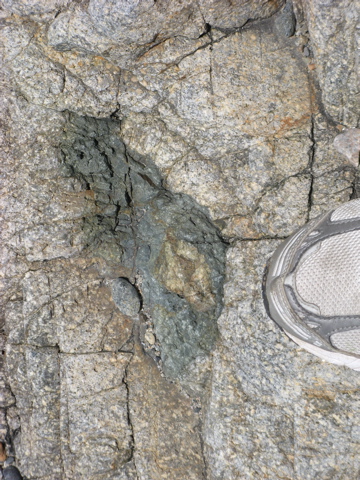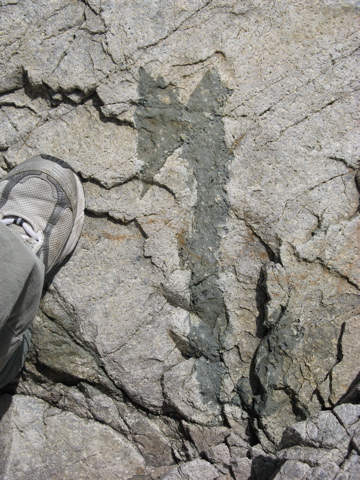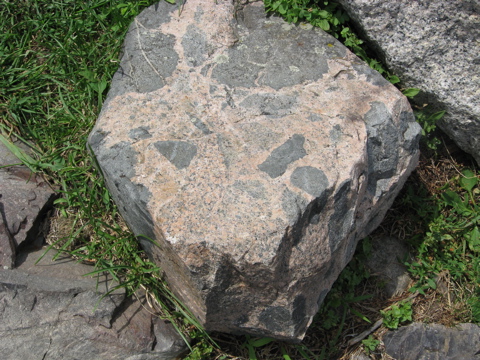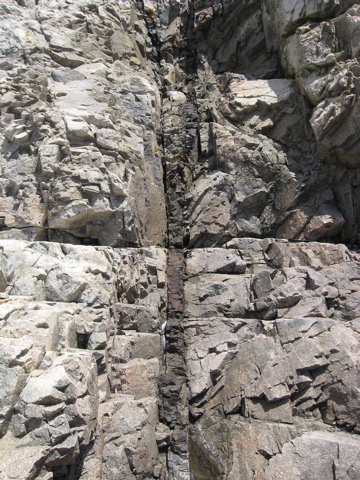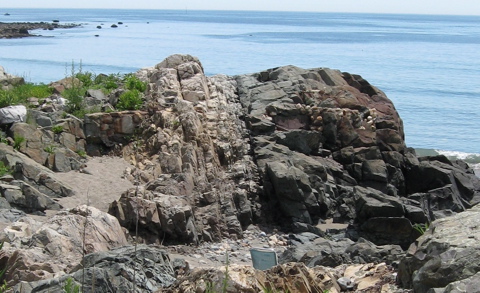Teacher Notes in Yellow
This "Field Trip" and the others in Marblehead highlights the fact that, while the Boston area is very geologically inactive at present, this was not always the case. For much of its history, the Boston area was next to tremendous and violent geologic activity. These rocks formed in the late Precambrian - probably between 550 and 570 million years ago. This was a period of time when many volcanoes were found in our area.
This site and the others in Marblehead are good places to discuss the different types of volcanic rocks. The rocks below are intrusive rocks. This is a good time to discuss that these rocks formed deep below the surface of the earth - probably thousands of feet down. By contrast, the rocks at Castle Rock and Marblehead Light are extrusive, which means they formed on the surface. Yet, how is it possible that all of these rocks appear, currently, exposed at the same altitude? Discuss how uplift, erosion, faulting can alter landscapes to make this possible.
We suggest looking at this "field trip" in conjuction with other volcanic sites. You may want to have your students look at Nantasket Beach and Dane Park at the same time.
In the pictures above (the right one is a close up of the one on the left), you can see rocks of two distinct colors. What are some different ways that this could have occured?
